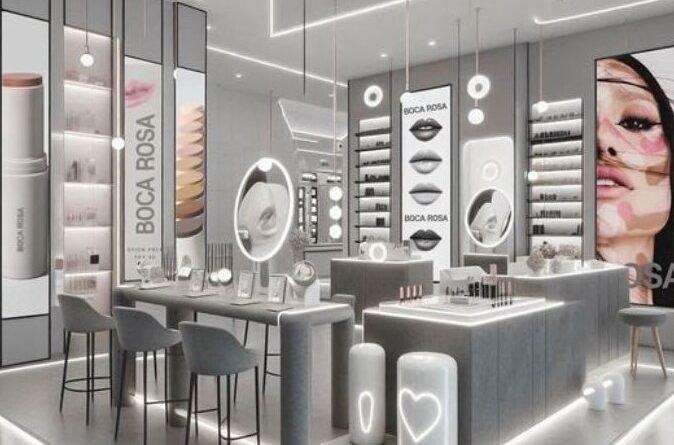Cosmetic Shop Interior Design: 10 Best Trends
If you are looking for cosmetic shop interior design ideas, you should not only focus on the eye -catch display. It should invite customers, interactive and affect. In this situation, you need some insight to highlight the atmosphere to ensure that the shop setup increases the brand and upgrade the customer when upgrading the products sold at the next level.
Table of Contents
Cosmetic Shop Interior Design
1. Make Your Store Shine
When designing a cosmetic shop light, you would also need to choose a color theme that is aligned with the general style of your shop. You might want a soft and warm light to suit a minimalist shop interior. In that case, a brighter, cooler light could be flattering for a bold, more colorful design. It’s also worth considering other types of lighting designs for the interior such as track lights, wall sconces and overhead lights to add dimension and help ease the store’s ambiance.
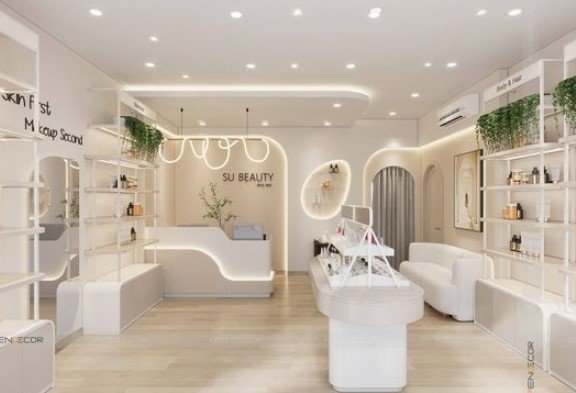
2. Layout and Organization for Maximizing Your Space
In the case of big cosmetics display inside a cosmetics shop, the space is frequently even more limited. To make the most of your space, think strategically about layout and organization. Make the most of your wall space by hanging items and building up. Signage and labels can be deployed to help steer customers through stores and to the products they want to purchase.

3. Appealing Displays
Signage and displays are also important for navigating customers through the shop and presenting goods. New product or sales displays that are eye catching can drive sales. Products and prices should be clearly and succinctly signed. Digital screens and interactive components can also help to provide an extra element of involvement.
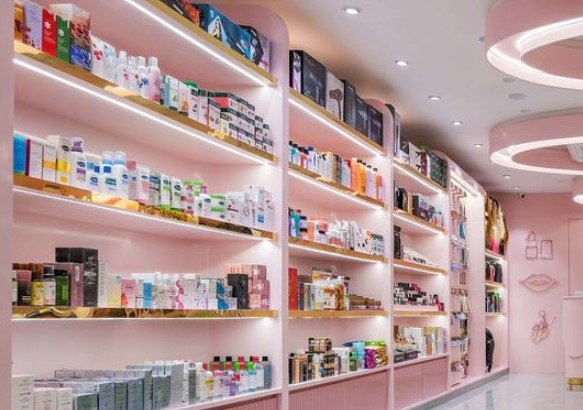
4. Transforming the Space with Lighting and Color
Lighting and color are strong elements that can be used to metamorphisize a space and to establish a particular ambiance. The choice of colors should match the brand’s identity and should result in a well thought out characteristic color scheme, creating a friendly and appealing atmosphere. Good lighting will show products at their best and make people feel welcome. Because bright colors can also invoke a sense of fun and playfulness, while muted tones speak of sophistication and elegance.
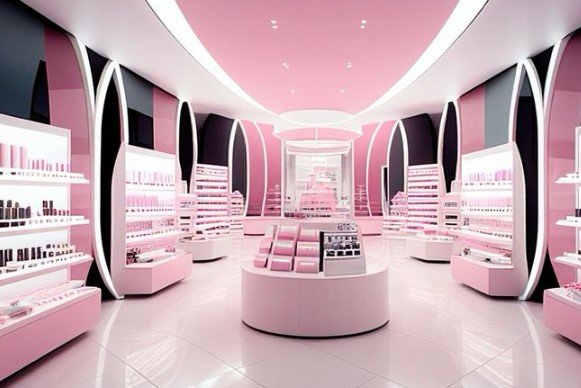
5. Creating a Welcoming Entrance
For cosmetic shop interior design, the entrance is significant enough to build a strong first impression. If you’ve got a beautiful sign, immaculate glass doors, and compelling window displays, you may be able to draw customers through the door. It also looks very inviting when you have some kind of point of interest, a little bit of greenery. The front should seduce casual browsers and serve as a welcome mat to the delightful experience insurgents will find there.

6. Mirrors and Test Stations
Mirrors and test stations are must-haves for cosmetic shop interior design. Mirrors conveniently located throughout the store allow customers to see what products look like on them, enhancing the shopping experience. Test stations allow people the opportunity to try products before buying, making it an interactive experience. The latter two not only increase customer satisfaction, but also improve the in-store interior layout functionality.
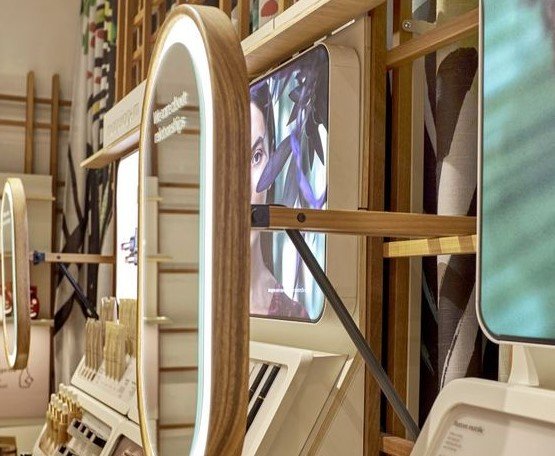
7. Comfortable and Stylish Seating
Comfortable yet trendy sitting arrangement – Seating is one of the essentials of the cosmetic shop’s interior design. Investing in properly designed furniture gives customers a place to rest or chat with employees, improving their shopping experience. This feature helps to create a pleasant and fun environment, which has the potential to keep customers in the store longer and browsing for more product.
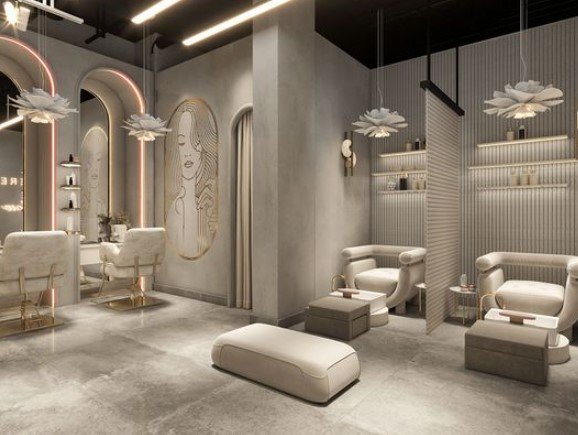
8. Seasonal and Themed Decor
Seasonal and themed decorations can help you change up beauty supplies store interior design all year round. Seasonal touches, such as bouquets of flowers in spring or festive decor during the holidays, also help to keep the store visually engaging. This also ties into marketing campaigns and promotions etc, which should make the shop feel fresh and exciting for customers.
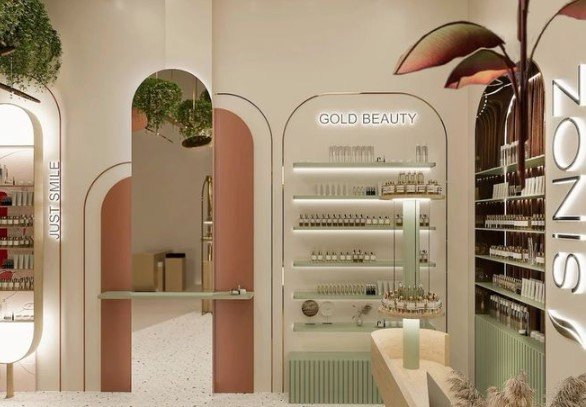
9. Efficient Checkout Area
Checkout Space A strong checkout space is a must for cosmetic shop interiors. Make sure It is approachable and you have clear counter space to facilitate fast transactions. A tidy checkout not only lowers customer queuing times, but also significantly reduces customer frustration, improving their shopping experience. This can lead to a better customer experience as well as repeat business.
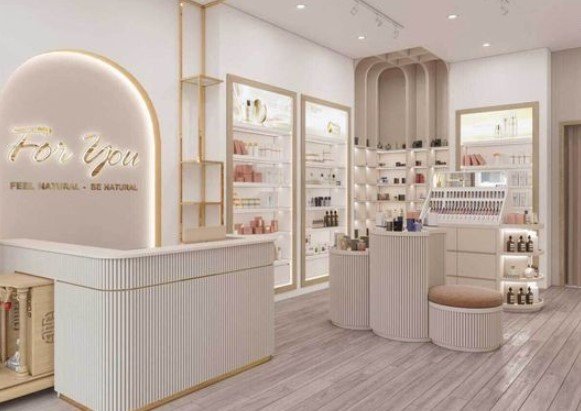
10. Customized Product Zones
Placing custom product zones within the shop is an important design strategy. Have specific locations for product types, skincare, make up, and hair products etc. to make it easier for the costumer to shop. Apply different color system or theme decoration on each zone, lead customer walk through naturally. This one not only looks a little better but makes your products bit more accessible, too.
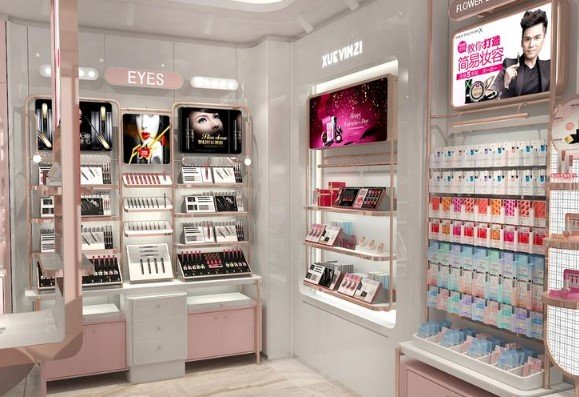
Conclusion
Integrating these mindful touches into your cosmetic shop interior design, you lift up the quality of customer experiences and can improve brand image. Every detail counts, from the strategic lighting and interesting displays to efficient layouts and comfortable seating. Adopt these concepts and great examples to make a space that draws in and relieves every guest.
Also read:
Top 10 Interior Designers for Office in Bangalore-2024!

